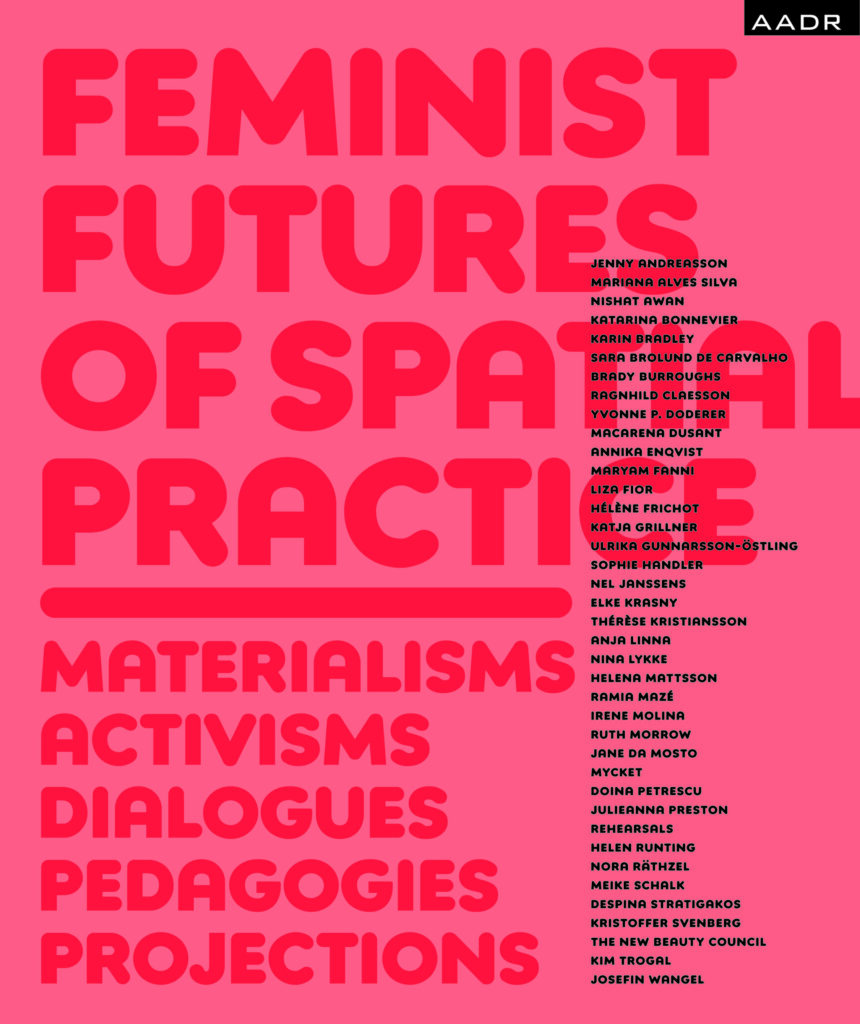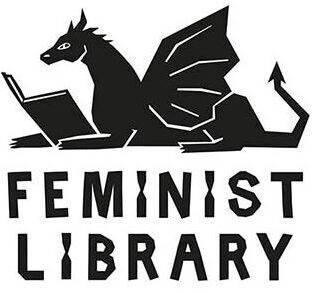Review: Feminist Futures of Spatial Practice: Materialisms, Activisms, Dialogues, Pedagogies, Projections
 Review: Feminist Futures of Spatial Practice: Materialisms, Activisms, Dialogues, Pedagogies, Projections, Meike Schalk, Thérèse Kristiansson, Ramia Mazé (eds), Baunach: AADR, 2017
Review: Feminist Futures of Spatial Practice: Materialisms, Activisms, Dialogues, Pedagogies, Projections, Meike Schalk, Thérèse Kristiansson, Ramia Mazé (eds), Baunach: AADR, 2017
‘An army of lovers cannot lose’ could be the alternative title for Feminist Futures – a rallying cry for deep collaboration as a feminist act. The quote is taken from MYCKET, a collaborative practice in art, design and literature. Their chapter writes the story of a full scale re-enactment of a queer feminist carnival. It’s a powerful encounter – one of many in this dynamic anthology. You feel like you’re there, part of the movement for change.
Feminist Futures started life as a project in the School of Architecture at KTH Royal Institute of Technology, Stockholm, and has inclusive learning at its core – incorporating acts of talking, listening, making, performing, resisting. Materialisms, Activisms, Dialogues, Pedagogies and Projections provide a framework for myriad perspectives on the built environment. But Feminist Futures is more about experiencing changing, transitory, space than designing fixed structures.
This concept is inspiringly recounted in Doina Petrescu’s ‘Reinventing the Commons’, which foregrounds the Atelier d’Architecture Autogérée (AAA) ECObox project, a temporary garden space on underused land in La Chapelle, France. This platform for creativity was adapted through mobile furniture into an urban kitchen and evolved through local ‘agent-users’ into a ‘feminine’ knowledge exchange. Is this the future of home? Shared endeavours that exist beyond the usual brick walls of domestic space, spaces designed through use, eroding boundaries and thresholds?
Particularly evocative is the account of a 2010 Architecture+Philosophy symposium in Melbourne Australia, in Hélène Frichot, Katja Grillner and Julieanna Preston’s chapter on ‘Writing Around the Kitchen Table’, where participants were encouraged to channel their breath-voices by exhaling ‘heavily, amply and readily’ onto a window-pane. That a passer-by, confronted with a scene of panting lips on glass, called the police – demonstrates the impact of small but radical acts.
This image of windows misting over in an act of togetherness sums up the kind of spatial practice that lies at the heart of the book’s challenge: to feel space differently and engage sensorily in the world round us – seeing, touching, hearing, smelling and tasting space as a feminist act. It is ‘Material Witchery’ as Ruth Morrow terms it in her piece on Tactility Factory, the collaboration between herself as architect and academic and Trish Belford, a renowned textile designer and researcher. Together they test the limits of a concrete modernity, its hardness and softness. Feminist Futures is also, therefore, a book about bodies: uncomfortable, joyful, marginalised, invisible, protesting, celebrating, changing, ageing bodies – reasserting presence through time and space.
Many of the contributions to Feminist Futures disrupt the idea of linear time, with a focus on revisiting, circling back, doing things differently and then doing them again: ‘We exist yesterday, we exist before, we exist/here/we exist all days,’ MYCKET.
The book is therefore in constant dialogue between past, present and future, including Ramia Mazé’s complex temporal (re)construction of her Stockholm apartment through wallpaper excavation in ‘Future (Im)perfect’, and Helen Runting’s uplifting prologue ‘The Waiting Room’ in which she makes the case for yearning: ‘like desire itself, anticipation does not express a lack, but rather a promise’. Runting’s pushing at the limits of ‘not yet, but soon’ advocates spending time with the projection of a new world. It’s a manifesto for stillness to ‘locate the possibility of progressive politics’ and prepare for the unfamiliar and the unexpected.
There is so much that is innovative and challenging in Feminist Futures, it would have been exciting to see the team reimagine the very structure of a book, which stands out as conventional against much of its content. ‘Lipstick’, the bespoke typeface by Kirstin Hanson, which makes its debut on the cover and titles, is a nod towards a publication in which word, image and design might more powerfully embody the spirit of collaboration that is so evident elsewhere.
Ultimately though this is a book for change-makers. Many projects talk about collaboration and conversation. Feminist Futures lives it. This is a book about giving space to both anger and love, a book that thinks, feels, listens and believes in a better future.
To finish with MYCKET: ‘Next year we do this naked’.
Sonia Solicari, Director, Museum of the Home
